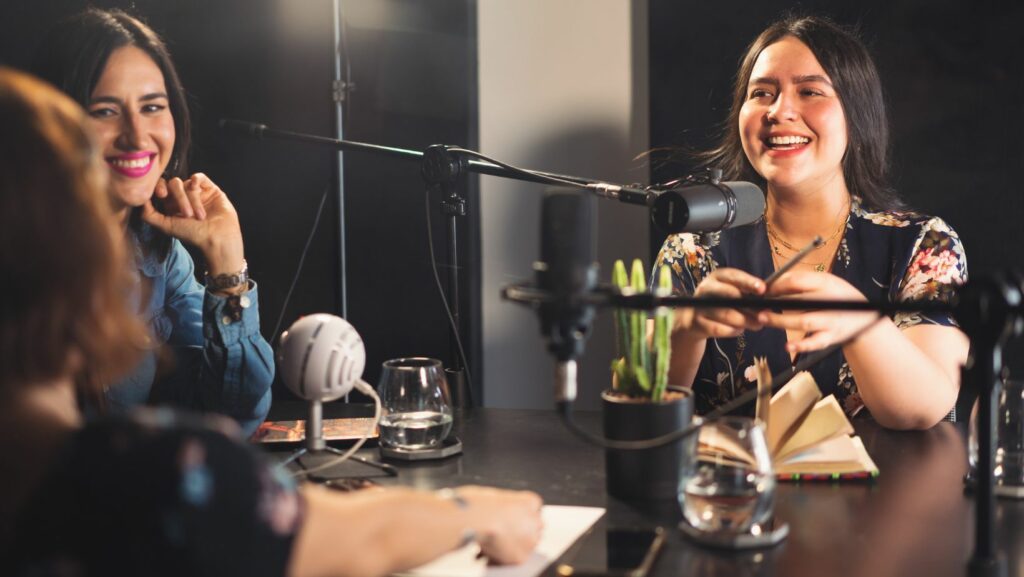Have you ever recorded a podcast with your best “radio voice,” only to hear it sound flat or distorted when shared on TikTok or Instagram? The problem might not be your microphone or delivery; it could be dynamic range compression.
Compression is a powerful tool in audio production, but using it incorrectly can make great recordings sound unnatural on social media. Let’s break down why this happens and how to fix it. Something that feels completely seamless, though, is having a blast with your friends on a Sunday evening at MasonSlots casino! It’s just like a regular night of poker but with a user-friendly and sleek interface.
What Is Dynamic Range Compression?
Dynamic range compression (or just “compression”) evens out the loud and quiet parts of your clip. It makes soft sounds louder and loud sounds softer. This creates a more balanced listening experience.
How It Works
Imagine you’re speaking into a mic:
- Loud moments (laughing, shouting) spike in volume.
- Quiet moments (whispers, pauses) barely register.
A compressor “squeezes” these extremes closer together. Podcasters use it to keep voices clear and consistent, but overdoing it can strip away natural emotion and depth.
Why Podcasters Love Compression
- Keeps volume steady for listeners.
- Reduces harsh peaks (like sudden loud laughs).
- Makes speech easier to hear in noisy environments.
But here’s the catch…what works for podcasts often fails on TikTok.
Why Your Podcast Voice Sounds Bad
Social media platforms like TikTok, Instagram, and YouTube apply their own compression to uploaded audio. If your podcast is already heavily compressed, adding another layer can make your voice sound:
- Flat and lifeless (no natural highs/lows).
- Distorted or robotic (over-processed).
- Quieter than expected.
How Social Media Changes Your Audio
- Volume Normalization: Platforms adjust audio to a standard loudness level.
- Aggressive Compression: They squash dynamic range even further to optimize for phone speakers.
- Low-Bitrate Encoding: Quality is reduced for faster streaming.

If your podcast mix is already condensed, these changes can turn a rich, warm voice into a dull, muffled version.
How to Fix It
You don’t have to ditch this function; just use it smarter. Here’s how to keep your voice sounding natural everywhere.
1. Use Light Compression
- Set a low ratio (2:1 or 3:1) for gentle leveling.
- Avoid heavy compression unless needed (e.g., noisy recordings).
2. Leave Some Dynamic Range
- Let quiet moments stay quiet; they sound more natural.
- Don’t crush peaks too hard; slight volume variations add emotion.
3. Test Before Posting
- Export a clip and upload it privately to TikTok/Instagram.
- Listen on the phone speakers. Does it still sound clear?
Bonus Tip: Use a Loudness Meter
Aim for -16 LUFS for podcasts (so social media compression doesn’t over-process it).
The Role of EQ
Compression isn’t the only tool that affects your voice, as equalization (EQ) plays a big role too.

When heavy edits flatten your audio, it can also emphasize unwanted frequencies, making your voice sound harsh or boomy.
How EQ Can Help
- Cut Low-End Rumble: Use a high-pass filter (around 80–100Hz) to remove plosives and mic handling noise.
- Reduce Harshness: A slight dip around 2–5 kHz can soften overly bright vocals.
- Add Clarity: A gentle boost in the upper mids (3–6 kHz) can help your voice cut through.
Why Different Platforms Need Different Mixes
Not all social media platforms treat sound the same way. What sounds good on TikTok might not work on YouTube or Twitter (X).
Platform-Specific Adjustments
- TikTok/Reels: Prioritize midrange clarity (vocals should stand out even without bass).
- YouTube: Allows slightly more dynamic range, so you can ease up on compression.
- Twitter (X): Audio often plays quietly, so aim for slightly louder mastering.
The Solution? Multiple Mixes
Consider exporting two versions of your podcast:
- Full dynamic range for podcast platforms.
- Slightly compressed & EQ-optimized for social media.


